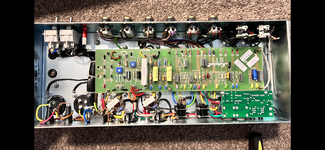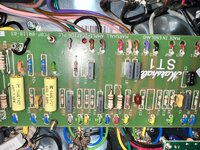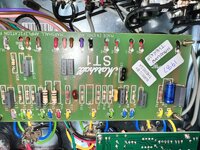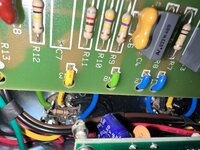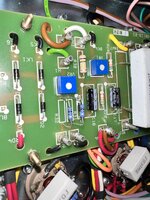SLOgriff
Well-known member
I just bought, what I thought, was a stock “used” Marshall 1987x. Inside the chassis it says modified by “Fusionbear - Carl Esparza”….to Early 1986 circuit”
From my research seems like he’s a pretty respected and knowledgeable guy!
It actually sounds great, with a lowered C11 bright cap and KT88’s.
My question is what’s the mod to R27 in the photo? Is that wire bypassing that resistor??
Thanks
Bryan



From my research seems like he’s a pretty respected and knowledgeable guy!
It actually sounds great, with a lowered C11 bright cap and KT88’s.
My question is what’s the mod to R27 in the photo? Is that wire bypassing that resistor??
Thanks
Bryan

